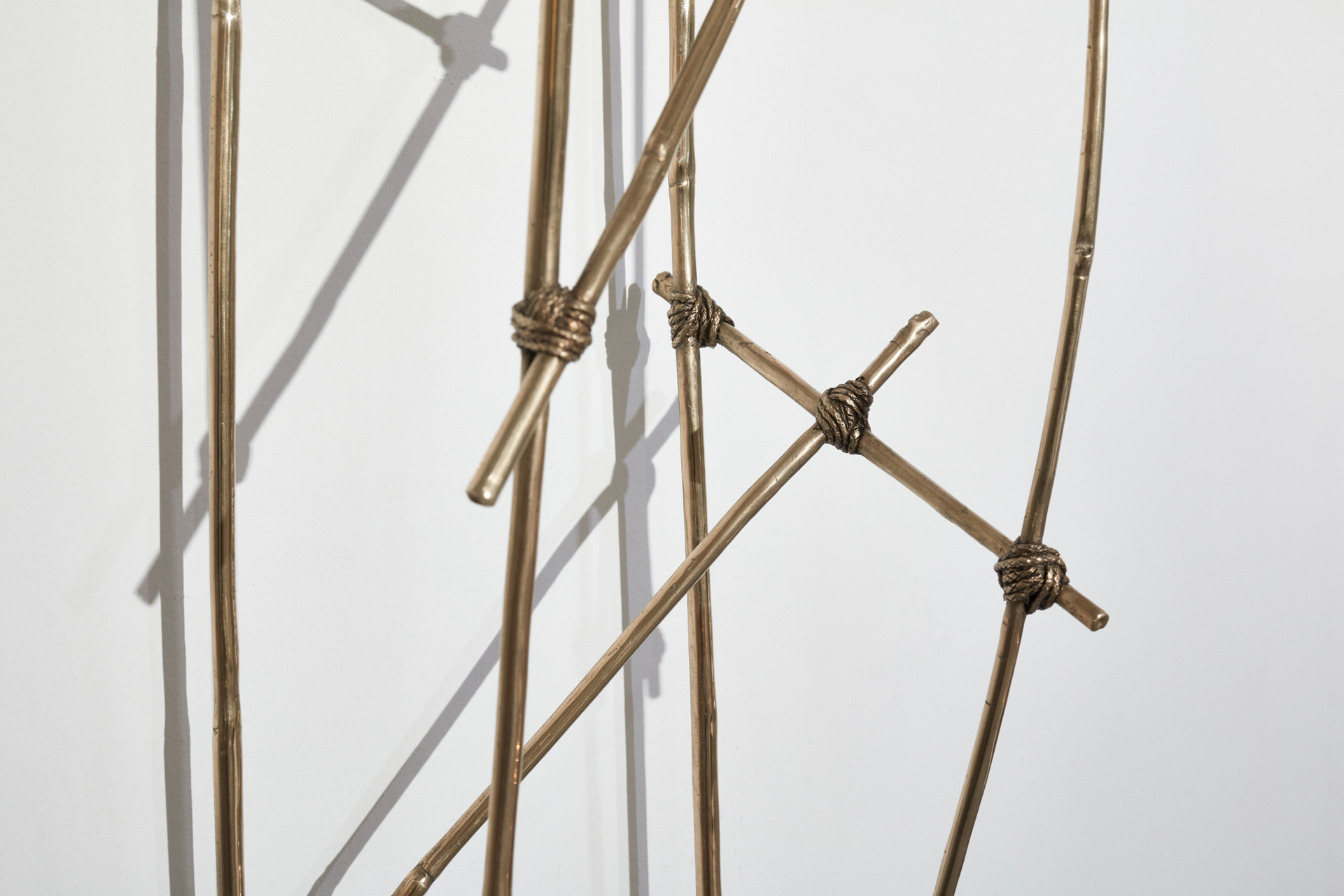Bronze, Hand Blown Glass
H80 / W25 / D30 CM
H31.5'' / W9.8'' / D11.8''
H31.5'' / W9.8'' / D11.8''



Glithero
Glithero is the London design partnership of Tim Simpson (UK) and Sarah van Gameren (NL), who met as students at the Royal College of Art. Early in their collaboration they published a manifesto which declared the transparency of their process. “We do it for the beauty of a thought or a moment,” they say. They respond to the very human desire to understand how things are made, capturing the very moment of creation, where material meets process and becomes product, in objects, furniture and film, and they animate and extend the moment by devising systems for making such things.
They seek out techniques within traditional industries which they can redirect to their own ends. “We are,” they say, “the most curious people on any factory tour.” They adopt processes which are conceptually simple – the mould, the extrusion, the photographic exposure, the burn – and turn each into the basis for a system of making. A helter-skelter wooden construction receives liquid polyconcrete to make a poured table form; a darkroom box with a turntable incrementally exposes a vase prepared with cyanotype and pressed-flower motifs to the light; a mandala of phosphorous compound painted upon a wooden panel determines a controlled surface burning. The method for extruding plaster, layer by layer, to make traditional architectural cornicing is commandeered, to yield frames, a console table, a vast circular bench. The process for the bench – part-theatre, part-manufacture – turns the hand-held zinc profile used by a single craftsman into a framed, shaped blade on a wooden armature, tethered at a central point, which requires four people to push it effortfully.
These machines and systems “create a distance between our hands and the things we make”, they say. The machines may be observed directly or in short documentary films, the narrative of which is embodied in the finished product. Ingenuity, the craftsman’s tacit understanding of materials, effort and process, all become part of the work.
